Ditapis dengan
E-book Plant Cell Culture Protocols
This fourth edition provides new and updated protocols on plant cell, tissue, and organ cultures. Chapters are divided into five parts that cover topics from general methodologies, statistical analysis and contamination control, highly specialized techniques, and laborious process of measuring the epigenetics changes in tissue cultures. Written in the highly successful Methods in Molecular Biol…
- Edisi
- -
- ISBN/ISSN
- 1588295478
- Deskripsi Fisik
- 411 halaman, ilus.
- Judul Seri
- -
- No. Panggil
- 580 LOY p
E-book Buildings for Education : A Multidisciplinary Overview of The Design o…
The design of educational spaces dedicated to school is a rather recent topic in Italy,since until the end of the nineteenth century and the unification of the country,1children were educated exclusively in private or ecclesiastical environments; andonly later, the school education was recognized for its significant role in theteaching and learning processes (Pennisi 2012). The evolution of the…
- Edisi
- -
- ISBN/ISSN
- 9783030336875
- Deskripsi Fisik
- 327 hlm
- Judul Seri
- -
- No. Panggil
- 371.6 CAJ b
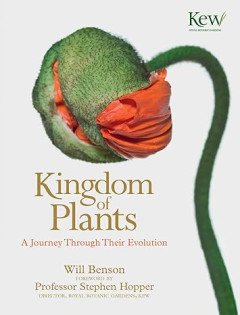
E-book Kingdom of Plants: A Journey Through Their Evolution
This book accompanies the landmark television series Kingdom of Plants 3D: With David Attenborough. In the last 500 million years, plants have undertaken an epic journey that has not only spanned the ages but has altered the very make-up of the planet. It was a journey that began in a dark and barren world, and has culminated in a planet that is draped in rich colours, and overflowing with a…
- Edisi
- -
- ISBN/ISSN
- 9780007463336
- Deskripsi Fisik
- 274 halaman, ilus.
- Judul Seri
- -
- No. Panggil
- 580 BEN k
E-book Remote Sensing of Plant Biodiversity
Improved detection and monitoring of biodiversity is critical at a time when Earth’s biodiversity loss due to human activities is accelerating at an unprecedented rate. We face the largest loss of biodiversity in human history, a loss which has been called the “sixth mass extinction” (Leakey 1996; Kolbert 2014), given that its mag-nitude is in proportion to past…
- Edisi
- -
- ISBN/ISSN
- 9783030331573
- Deskripsi Fisik
- 594 hlm
- Judul Seri
- -
- No. Panggil
- 580 ADE r
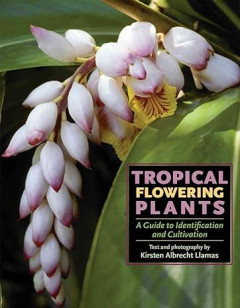
E-book Tropical Flowering Plants: A Guide to Identification and Cultivation
This book bridges a long-standing gap between obscure references in tropical botany and the gardener's need for an accurate, practical guide with clear photographs. Incorporating the latest advances in plant taxonomy from the definitive text of Dr. Walter Judd, the book is a rare work of scrupulous research — and magnificent photography — that will be as useful to the gardener as it is to t…
- Edisi
- -
- ISBN/ISSN
- 9780881925852
- Deskripsi Fisik
- 425 halaman
- Judul Seri
- -
- No. Panggil
- 635.9 LLA t
E-book The Wheat Genome
In 2018, the International Wheat Genome Sequencing Consortium published a reference genome sequence for bread wheat (Triticum aestivum L.). The landmark achievement was the culmination of a thirteen-year international effort focused on the production of a genome sequence linked to genotypic/phenotypic maps to advance understanding of traits an…
- Edisi
- -
- ISBN/ISSN
- 9783031382949
- Deskripsi Fisik
- 328 hlm
- Judul Seri
- -
- No. Panggil
- 580 ROG t
E-book Illustrated Pollen Terminology
During the first half of the nineteenth century, some fundamental insights into pollen morphology and physiology were achieved. Purkinje made the first attempt for a palynological terminology by classifying pollen based on their morphology (Purkinje 1830). Wodehouse (1935) pointed out that “Purkinje’s system of nomenclature deserved much more attention than was ever given …
- Edisi
- -
- ISBN/ISSN
- 9783319713656
- Deskripsi Fisik
- 483 hlm
- Judul Seri
- -
- No. Panggil
- 580 HAL i
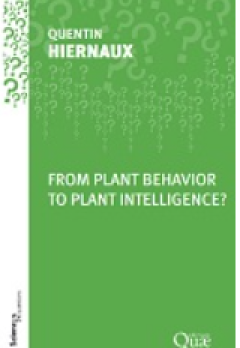
E-book From Plant Behavior to Plant Intelligence?
Behavior is a key concept in numerous fields of study: psychology, ethology, but also in the biology of organisms. It does not cause much surprise that dolphins, chimpanzees or rats display rational behavior – after all, they are not so different from us. But what about the organisms we deem “simpler”? Or even brainless organisms like plants? Do t…
- Edisi
- -
- ISBN/ISSN
- 9782759237463
- Deskripsi Fisik
- 107 hlm
- Judul Seri
- -
- No. Panggil
- 580 HIE f

E-book Sago Palm: Multiple Contributions to Food Security and Sustainable Liv…
t present, as estimated by FAO, the world produces more or less sufficient food to meet the needs of world population and maintains sufficient food stock to cover nearly 25% of estimated annual utilization. Despite the positive situation on the sup-ply side, FAO’s estimation in 2014–2016 indicated that, globally, 795 million peo-ple were unable to meet their dietary energy requ…
- Edisi
- -
- ISBN/ISSN
- 9789811052699
- Deskripsi Fisik
- 317 hlm
- Judul Seri
- -
- No. Panggil
- 580 KON s
E-book A Researcher’s Guide to: Plant Science
Advances made during decades of spaceflight experimentation have identified critical gaps in our understanding of the role of gravity and the spaceflight environment on plant biology at the cellular, tissue, whole plant, and community levels. The International Space Station is a unique platform where reduced gravity can be used to probe and dissect biological mechanisms in plants for underst…
- Edisi
- -
- ISBN/ISSN
- -
- Deskripsi Fisik
- 44 halaman, ilus.
- Judul Seri
- -
- No. Panggil
- 580 NAS a
E-book The Plant Stem : A Microscopic Aspect
errestrial life forms made their move on land about 400 mil-lion years ago. Plants crossed the barrier between life in water to life in the atmosphere. With the invention of stable stems, plants overcame hydrological and mechanical problems. The construction of plant stems is the focus of this book. It demon-strates that nature created a framework in which plant stems…
- Edisi
- -
- ISBN/ISSN
- 9783319735245
- Deskripsi Fisik
- 207 hlm
- Judul Seri
- -
- No. Panggil
- 580 SCH t
E-book Plants and vegetation of NW Ethiopia : A new look at Rodolfo E.G. Pic…
d more in the development of science, particularly in Ethiopia, because the Italian language in which they are published is not more widely read. These results should be more widely known, and the present authors hope that this publication will help to remedy that problem. We provide commented translations of the papers that present the field observations and we analyse the update…
- Edisi
- -
- ISBN/ISSN
- 9788855186346
- Deskripsi Fisik
- 360 hlm
- Judul Seri
- -
- No. Panggil
- 580 FRI p
E-book Fresh Fruits and Vegetables
Shoots in this class must be of superior quality, very well formed and practically straight. Having regard to the normal characteristics of the group to which they belong, their tips must be very compact. Only a few very slight traces of rust caused by non-pathogenic agents on the shoot, removable by normal peeling by the consumer, are allowed. For the white asparagus group, the tips and shoots…
- Edisi
- -
- ISBN/ISSN
- 9789251058398
- Deskripsi Fisik
- 195 hlm
- Judul Seri
- -
- No. Panggil
- 581.464 FAO f
E-book Plant (DK/Google E.guides)
Looks at core topics from many angles, using facts, 3-D models, data boxes, charts, and more, bringing together the best of the Web with DK's outstanding reference books. e.guides Plant has its own Web site, Create by DK and Google. When you look up a subject in the book, the article gives you key facts and displays a keyword that links you to extra information online.
- Edisi
- -
- ISBN/ISSN
- 9780756619541
- Deskripsi Fisik
- 100 halaman, ilus.
- Judul Seri
- -
- No. Panggil
- 580 BUR p
E-book Cattle Diseases : The Farmer's Guide
Anthrax has not been diagnosed in SA for many years, but the risk of an outbreak is heightened with occasional detections in NSW and Victoria as well as isolated outbreaks in WA and Queensland. Anthrax is caused by a bacterium that affects many species including cattle, sheep, goats and humans. The bacterium produces spores when exposed to air that persist in soil for many years. The disease is…
- Edisi
- -
- ISBN/ISSN
- -
- Deskripsi Fisik
- 77 hlm
- Judul Seri
- -
- No. Panggil
- 571.9 ANI c
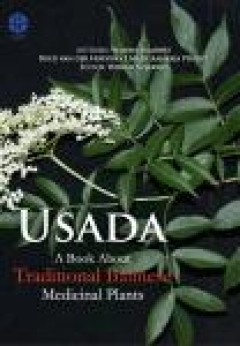
E-Book Usada: Traditional Balinese Medicinal Plants
“Nature has provided us a solution for our health problems. The only thing required is finding the right plants and using them in such a manner that the active compound can do its job.” This book about Balinese traditional medicinal plants serves as an effort to disseminate information about various types of medicinal plants collected by Bali Botanical Gardens along with the information on…
- Edisi
- -
- ISBN/ISSN
- 978-602-496-123-7
- Deskripsi Fisik
- xiv pages + 136 pages; 14,8 × 21 cm
- Judul Seri
- -
- No. Panggil
- 615.321598 WAW u
E-book A Guide Book to Invasive Alien Plant Species in Indonesia
All plants described in this guide book are alien speces and they can also be found elsewhere in Southeast Asia region. Almost all have been introduced to Southeast Asia, either intentionally or unintensionally. Some have been naturalized such as Imperata cylindrica or “alang alang” that are capable of reproducing and spreading without human intervention. Several species are most common wee…
- Edisi
- -
- ISBN/ISSN
- 9789798452666
- Deskripsi Fisik
- 440 hlm
- Judul Seri
- -
- No. Panggil
- 581.598 SET a
E-book Plant Physiology
Water plays a crucial role in the life of plant. It is the most abundant constituents of most organisms. Water typically accounts for more than 70 percent by weight of non-woody plant parts. The water content of plants is in a continual state of flux. The constant flow of water through plants is a matter of considerable significance to their growth and survival. The uptake of water by cells gen…
- Edisi
- -
- ISBN/ISSN
- -
- Deskripsi Fisik
- 121 hlm
- Judul Seri
- -
- No. Panggil
- 571.2 ORD p
E-book Plant Physiology
The term cell is derived from the Latin cella, meaning storeroom or chamber. It was first used in biology in 1665 by the English botanist Robert Hooke to describe the individual units of the honeycomb-like structure he observed in cork under a compound microscope. The “cells” Hooke observed were actually the empty lumens of dead cells surrounded by cell walls, but the term is an apt one be…
- Edisi
- 3rd ed.
- ISBN/ISSN
- 0878938230
- Deskripsi Fisik
- 675 hlm
- Judul Seri
- -
- No. Panggil
- 571.2 TAI p
E-book Novel Plant Imagingand Analysis Water, Elements and Gas, Utilizing Rad…
Currently, powerful methods derived from molecular genetics have resulted in atendency to focus research on the molecular aspects of biology and tend to leavebehind important aspects of the activity of intact plants. However, the intact plantitself has high potential to integrate functions and to respond to diverse environ-mental conditions. To study the activity and development of living plant…
- Edisi
- -
- ISBN/ISSN
- 9789813349926
- Deskripsi Fisik
- 230 hlm
- Judul Seri
- -
- No. Panggil
- 571.2 NAK n
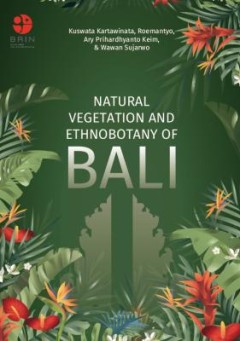
E-book Natural Vegetation and Ethnobotany of Bali
Bali Island has a vast extent of vegetation, and the Balinese have good use of this in cultural, religious, and daily access aspects. This book uncovers the study of vegetation in Bali, extending from the seaside to the mountains. Moreover, in the ethnobotanical aspect, this book presents the result of a study on how Balinese people utilize the biodiversity bestowed on them. The first part of t…
- Edisi
- Edition 1
- ISBN/ISSN
- 9786237425731
- Deskripsi Fisik
- xxv p. + 265 p.; 14,8 x 21 cm
- Judul Seri
- -
- No. Panggil
- 580.7 KAR n
 Karya Umum
Karya Umum  Filsafat
Filsafat  Agama
Agama  Ilmu-ilmu Sosial
Ilmu-ilmu Sosial  Bahasa
Bahasa  Ilmu-ilmu Murni
Ilmu-ilmu Murni  Ilmu-ilmu Terapan
Ilmu-ilmu Terapan  Kesenian, Hiburan, dan Olahraga
Kesenian, Hiburan, dan Olahraga  Kesusastraan
Kesusastraan  Geografi dan Sejarah
Geografi dan Sejarah